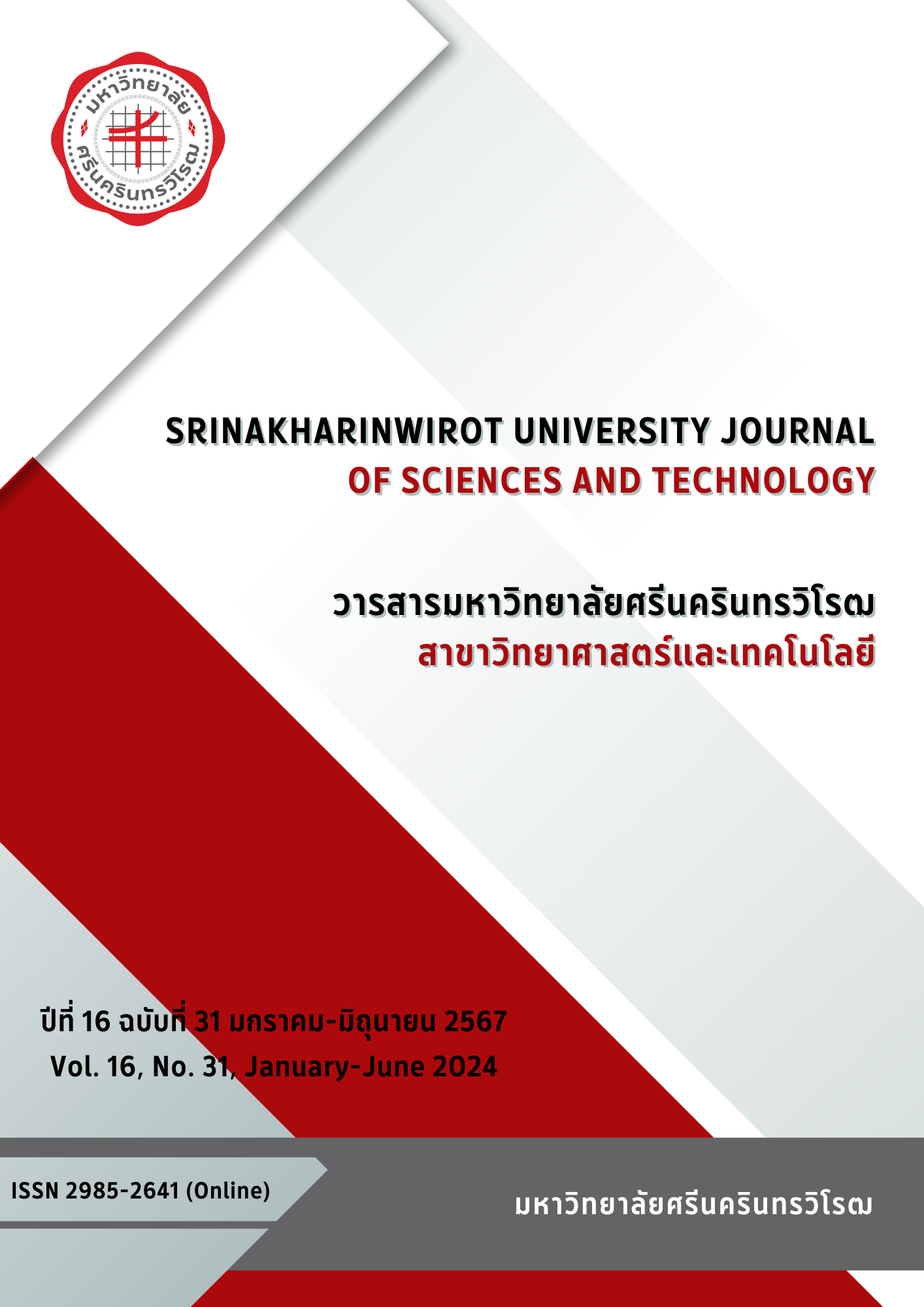RESEARCH AND DEVELOPMENT OF INNOVATIONS TO REHABILITATE ARM FUNCTIONALITY IN ELDERLY INDIVIDUALS AND STROKE PATIENTS WITH MUSCLE WEAKNESS
Keywords:
อุปกรณ์กายภาพ, โรคหลอดเลือดสมอง, โรคอัมพาต, ผู้สูงอายุ, เวชศาสตร์ฟื้นฟู, แบบเรียนรู้ซ้ำAbstract
This research aims to apply the finite element method to design and develop a physical innovation for forearm and hand rehabilitation using a repetitive learning approach. This innovation is intended to restore functionality in patients with cerebrovascular disease and the elderly with muscle weakness in their arms and hands, including improving movement control. It is designed to be self-helping, allowing individuals to regain near-normal arm and hand function. Additionally, it is a prototype for medical technology that is limited and costly, enabling local production and reducing imports. Furthermore, it aims to promote and expand access to effective treatment in Thailand. The innovation focuses on repetitive learning-based physical rehabilitation for managing weak arm muscles. Patients insert their arms into a physical skateboard set to support them and practice moving their arms along a semicircular slide. If a patient's arm is not strong enough, the device has a function to assist in moving their arm along the slide rail according to the program. The engineering design and analysis results show that the various components of the innovation are structurally sound and suitable for producing a quality product within the specified scope. They can also be used to develop an innovation for restoring arm functionality in patients with muscle weakness due to stroke.
Downloads
References
Jaewchantuek, N. (2016). Type of Stroke. Retrieved from http://mccormickhospital.blogspot.com
Thaihealthlife. (2009). Rupture of blood vessels in the brain. Retrieved from http://thaihealthlife.com
Choi, S., Kim, K., Cha, M., and Lee, B. H. (2019). Glial regulation in the insular cortex alleviates neuropathic pain caused by nerve injury. IBRO Reports, 6, S290.
Sanguantrakul, J., Soontreekulpong, N., Trakoolwilaiwan, T., and Wongsawat, Y. (2019). Analysis of body movement using EEG for the limb activity of paralysis patients. IBRO Reports, 6(Supplement), S290.
Bamrungthai, P. (2015). Restoring arm control for stroke patients using a depth-sensing device combined with a game. Retrieved from http://www.sci.rmutt.ac.th
Coote, S., Murphy, B., Harwin, W., and Stokes, E. (2008). The effect of the GENTLE/s robot-mediated therapy system on arm function after stroke. Clinical rehabilitation, 22(5), 395-405.
Lum, P. S., Burgar, C. G., Van der Loos, M., Shor, P. C., Majmundar, M., and Yap, R. (2006). MIME robotic device for upper-limb neurorehabilitation in subacute stroke subjects: A follow-up study. Journal of rehabilitation research and development, 43(5), 631-642.
Mohamaddan, S., Jamali, A., Abidin, A. S. Z., Jamaludin, M. S., Abd Majid, N. A., Ashari, M. F., and Hazmi, H. (2015). Development of upper limb rehabilitation robot device for home setting. Procedia Computer Science, 76, 376-380.
Rudhe, C., Albisser, U., Starkey, M. L., Curt, A., and Bolliger, M. (2012). Reliability of movement workspace measurements in a passive arm orthosis used in spinal cord injury rehabilitation. Journal of neuroengineering and rehabilitation, 9, 1-8.
Zhao, Y., Liang, C., Gu, Z., Zheng, Y., and Wu, Q. (2020). A new design scheme for intelligent upper limb rehabilitation training robot. International journal of environmental research and public health, 17(8), Article number 2948.
Zimmerli, L., Krewer, C., Gassert, R., Müller, F., Riener, R., and Lünenburger, L. (2012). Validation of a mechanism to balance exercise difficulty in robot-assisted upper-extremity rehabilitation after stroke. Journal of neuroengineering and rehabilitation, 9(1), 1-13.
Gopsill, J. A., Shindler, J., and Hicks, B. J. (2018). Using finite element analysis to influence the infill design of fused deposition modelled parts. Progress in Additive Manufacturing, 3(3), 145-163.
Dechaampai, P. (2009). Application of finite elements with SolidWorks Simulation. Bangkok: SE-ED Publisher.
Ungphakorn, W., and Thanatngan, C. (2013). Mechanical Design. Bangkok: SE-ED Publisher.
Hinkerd, C. (2016). Basic electromechanical. Bangkok: TPA publishing.
Downloads
Published
How to Cite
Issue
Section
License
Copyright (c) 2024 Srinakharinwirot University Journal of Sciences and Technology

This work is licensed under a Creative Commons Attribution-NonCommercial-NoDerivatives 4.0 International License.
Srinakharinwirot University Journal of Sciences and Technology is licensed Under a Creative Commons Attribution-NonCommercial-NoDerivs 4.0 International (CC-BY-NC-ND 4.0) License, Unless Otherwise Stated. Please Read Journal Policies Page for More Information on Open Access, Copyright and Permissions.



